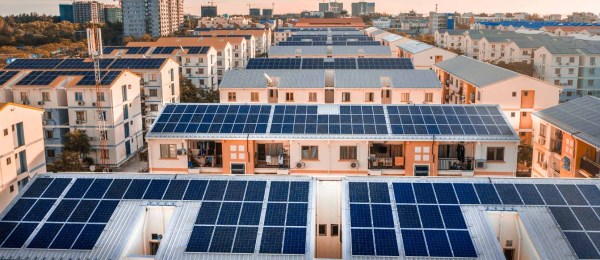Embedded Networks in Strata – A Look Across Jurisdictions

What are Embedded Networks?
Strata communities are one of the biggest consumers of embedded network systems. In short, embedded networks are systems used in multi-tenanted buildings or complexes, to re-distribute energy through a private system.
Generally, the owner of a site will purchase the energy from an energy retailer, and then sell the energy directly to the tenants, often through something called a ‘microgrid’.
What are some issues that arise from embedded networks in strata?
Embedded networks are complex and technical systems and can be misunderstood by the consumers that engage in their use. When purchasing into a strata scheme, future owners can often be completely unaware of the schemes involvement in an embedded network.
When implemented correctly, embedded network systems have the potential to offer unique, positive financial outcomes for consumers including better pricing, flexibility and access. On the other side of things, it can be a difficult area to ensure that consumers are properly protected, as a lack of understanding, lack of transparency and unfair contracts can lead to poor outcomes.
Embedded network customers can be limited in their ability to engage in the market, and consumers have indicated that they have faced significant challenges when attempting a market operation like changing providers.
A lack of access to competitive pricing may result in disproportionately high costs, which are ultimately passed on from lot owners to tenants. In theory, embedded network users should have full capacity and ability to access licenced retailers.
What are the solutions?
Creating equal rights between embedded and non embedded customers is a critical first step to energy market parity. In essence, embedded network customers should have an experience that is the same or similar to that of nonembedded network customers. Customers should have the capability of full retail choice, with the ability to price shop and compare market rates to find the best price and service for them.
Rights and protections that include shorter contract lengths, no automatic rollover, and transparency of information to customers, should allow for greater oversight and contribute to growing the accountability of energy providers serving these customers.
Embedded network contracts should also form part of sales contracts for all off-the-plan purchases, so that potential buyers are aware of what they are signing up for. Any commissions, benefits, or free installations of equipment should be also outlined within this practice of disclosure.
Where are we now?
As the growth of residency in strata titles continues to expand across Australia, so too has the frequency of embedded network agreements. It’s important that the legislation in each state is robust enough to ensure that embedded network consumers are adequately protected and receiving the theoretical benefits that utilising an embedded network system may provide.
SCA in almost every jurisdiction has provided input on behalf of the strata sector into inquiries and government processes.
Currently:
• In Victoria, the government has announced that embedded networks will now be completely banned in new residential apartment buildings, unless they are 100% renewable and are clearly beneficial to users.
• In New South Wales following the ban in Victoria, the New South Wales Legislative Assembly Committee on Law and Safety is conducting a thorough inquiry into the viability of embedded networks.
• Embedded networks have undergone a similar parliamentary inquiry in South Australia in 2021, via the Economic and Finance Committee, which continues to be considered.
• In Queensland, new customer access rules came into effect on 1 December 2017, requiring compliance with a number of consumer protection provisions, such as metering requirements and regulation of electricity charges.
• In Tasmania and the Australian Capital Territory, regulators have set prices so that providers are restricted, and cannot charge more than regulated retail prices for standard supply customers.
• In Western Australia, licence exemptions that allow the supply of electricity through an embedded network is provided in the Electricity Industry Exemption Order 2005. Non-compliance with the consumer protection requirements outlined in the order results in the loss of licence for providers.
• In New Zealand, embedded networks have been around for a shorter period of time than Australia, and as a result enjoy a fairly robust regulatory framework. Distributors are subject to measures such as information disclosure requirements, and price-quality regulation by the NZ Commerce Commission.
View Comments
(0)